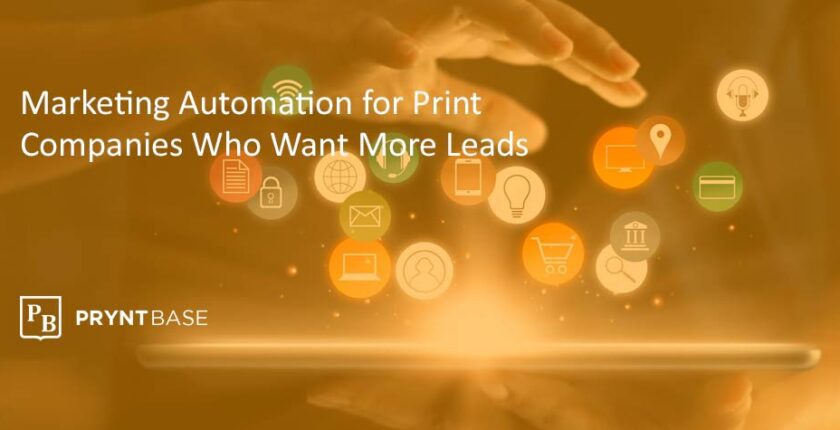Have you ever wondered why many print companies collect leads but still struggle to close deals? It’s not a lack of interest, but often a lack of follow-up. That’s where marketing automation comes in. For print service providers (PSPs), automation helps streamline the journey from first click to final print order. But it has to be tailored. The print buyer’s path involves more steps, longer timelines, and physical touchpoints that digital-only marketing rarely addresses.
This post will walk you through how to build automation flows that combine email drips, reminders, and print-specific triggers to turn leads into customers. You’ll learn how to map the print buyer funnel, structure lead nurturing campaigns, and integrate offers that align with the way people actually shop for print services. When done right, print sales automation becomes your best closer.
Why Print Buyers Need Special Treatment in Automation
The print sales cycle is fundamentally different from standard B2B or ecommerce funnels. It often includes committees, budget approvals, and sample reviews, which require a more strategic approach.
- Tactile reinforcement matters
Unlike digital buyers, print buyers need to touch and see the final product. Samples, mockups, and swatches can be built into automation flows as fulfillment triggers. - Multiple touchpoints are required
A lead might need email reminders, SMS nudges, or even retargeted ads before moving forward. A single email won’t cut through the noise. - Timing is everything
Print buying aligns with budget cycles, seasonal campaigns, and internal deadlines. Triggers and sequences need to reflect these rhythms.
Understanding these nuances helps you build automation that aligns with real-world print buying behaviors, not just generic sales pipelines.
Mapping the Print Buyer Funnel & Touchpoints
Before launching automation, map your print buyer journey. Each stage should have corresponding content and trigger-based actions.
- Awareness / Interest
Capture attention with helpful lead magnets like “10 Tips for High-Impact Print Marketing.” This top-of-funnel content sets the tone and builds trust. - Evaluation / Consideration
Provide materials that help buyers weigh their options. Case studies, ROI calculators, or sample request offers can move leads forward. - Decision / Purchase
Now is the time to present urgency triggers. Limited-time discounts, deadline reminders, or free shipping can help close the deal. - Post-Purchase / Upsell
Don’t stop after the first order. Reorder reminders, cross-sell suggestions, and loyalty rewards turn one-time buyers into repeat customers.
Each stage should move leads closer to conversion, while automation handles the heavy lifting behind the scenes.
Designing Email Drip & Reminder Sequences That Convert
Effective email drips for print buyers aren’t about volume. They’re about timing, value, and relevance.
- 7 to 14-day sequences
Start with a sequence that stretches over one to two weeks. Begin with educational content, then gradually introduce offers or calls to action. - Smart reminders
Trigger follow-ups based on engagement. If a lead opens but doesn’t click, send additional value. If they go cold, try a reactivation email. - Behavior-based offers
For example, if someone views your sample pack but doesn’t order, follow up with a 25% off incentive to push action. - Personalization at scale
Use dynamic content blocks to adjust emails by interest. If someone wants brochures, don’t send them packaging promos. Relevance increases response.
These strategies keep the conversation going and build trust through consistent, tailored touchpoints.
Integrating Print-Specific Triggers & Offers
Beyond email, smart automation accounts for actions that signal buying intent.
- Web behavior triggers
If a visitor browses your “business cards” page multiple times, set a follow-up email offering a free design consultation. - Sample request follow-up
Automatically send a thank-you message with additional info or a discount on a full order after a sample request is received. - Abandoned quote reminders
When someone gets a quote but doesn’t check out, send a friendly nudge or include a time-limited incentive to finalize the purchase. - Seasonal and budget-based offers
Set triggers around common print buying periods, end-of-year catalogs, Q2 promo materials, or event-driven campaigns. Align offers with these cycles for maximum impact.
By building print-specific intelligence into your automation, you’re not just reacting, you’re anticipating buyer needs.
Applied with strategy, marketing automation can transform a print company’s sales process. When PSPs map the buyer journey, create thoughtful drip sequences, and integrate print-centric triggers, they position themselves to close more deals with less manual effort. Automation isn’t just about saving time, it’s about moving leads through the funnel in a way that respects the unique rhythm of print buying.


